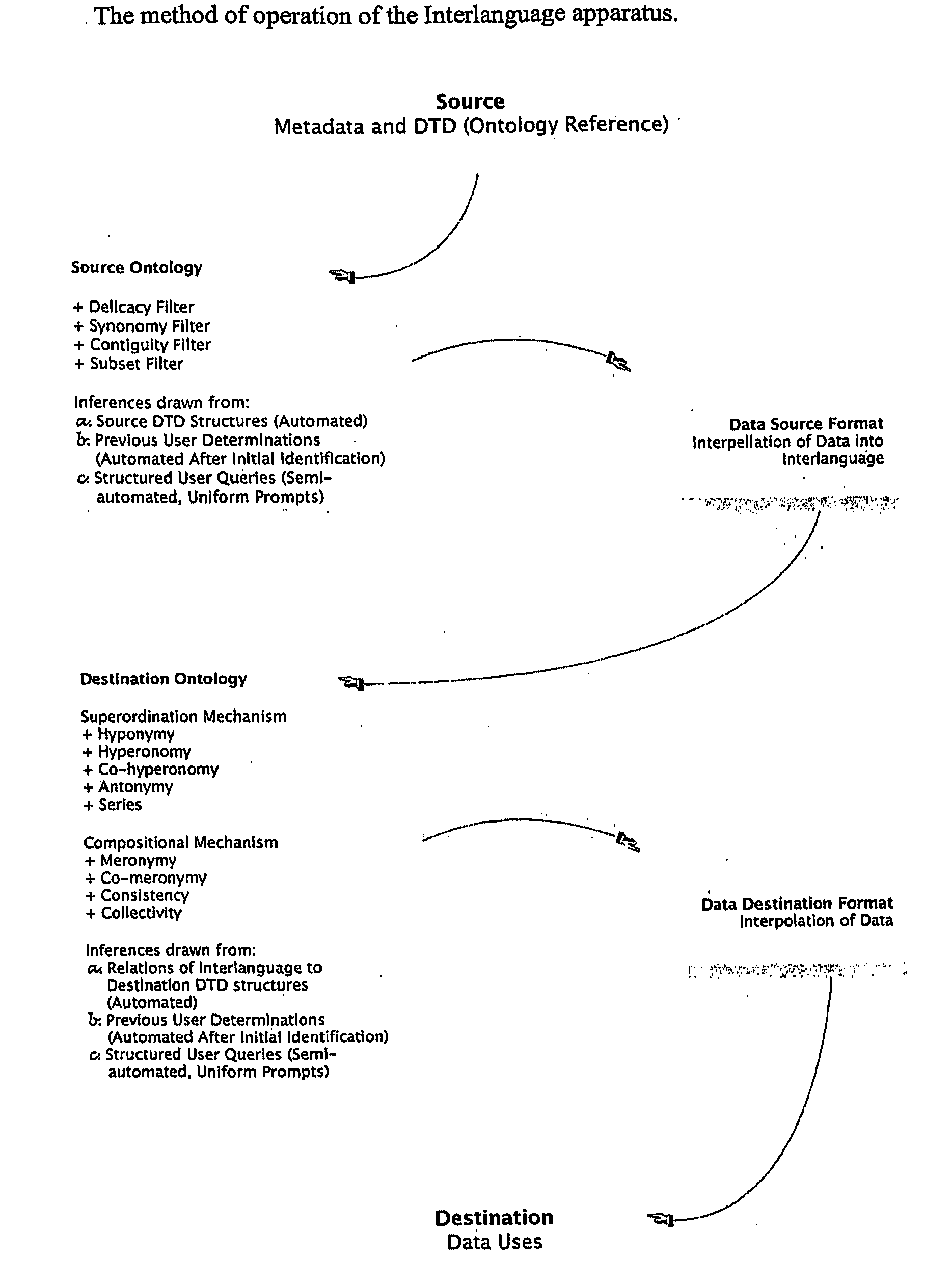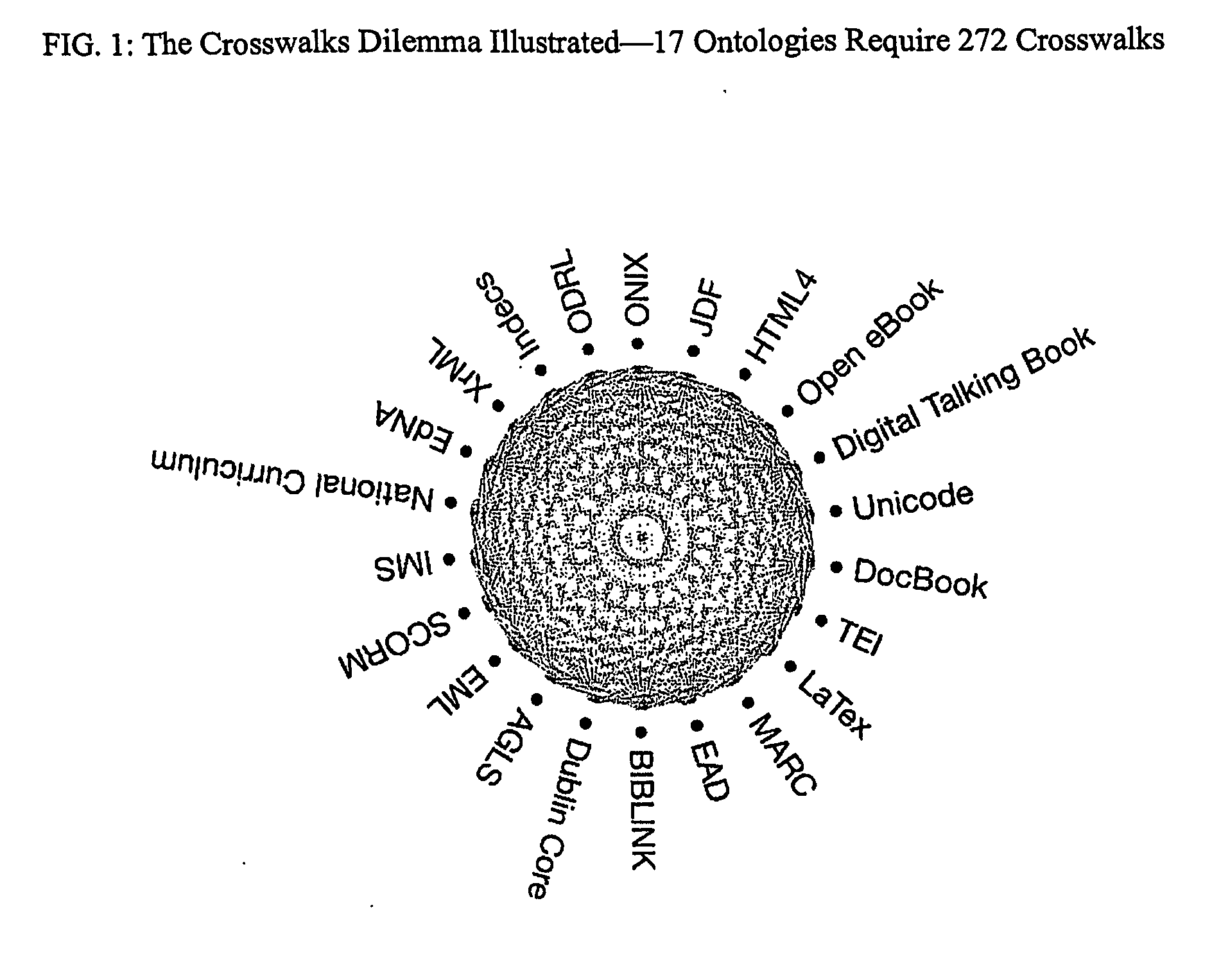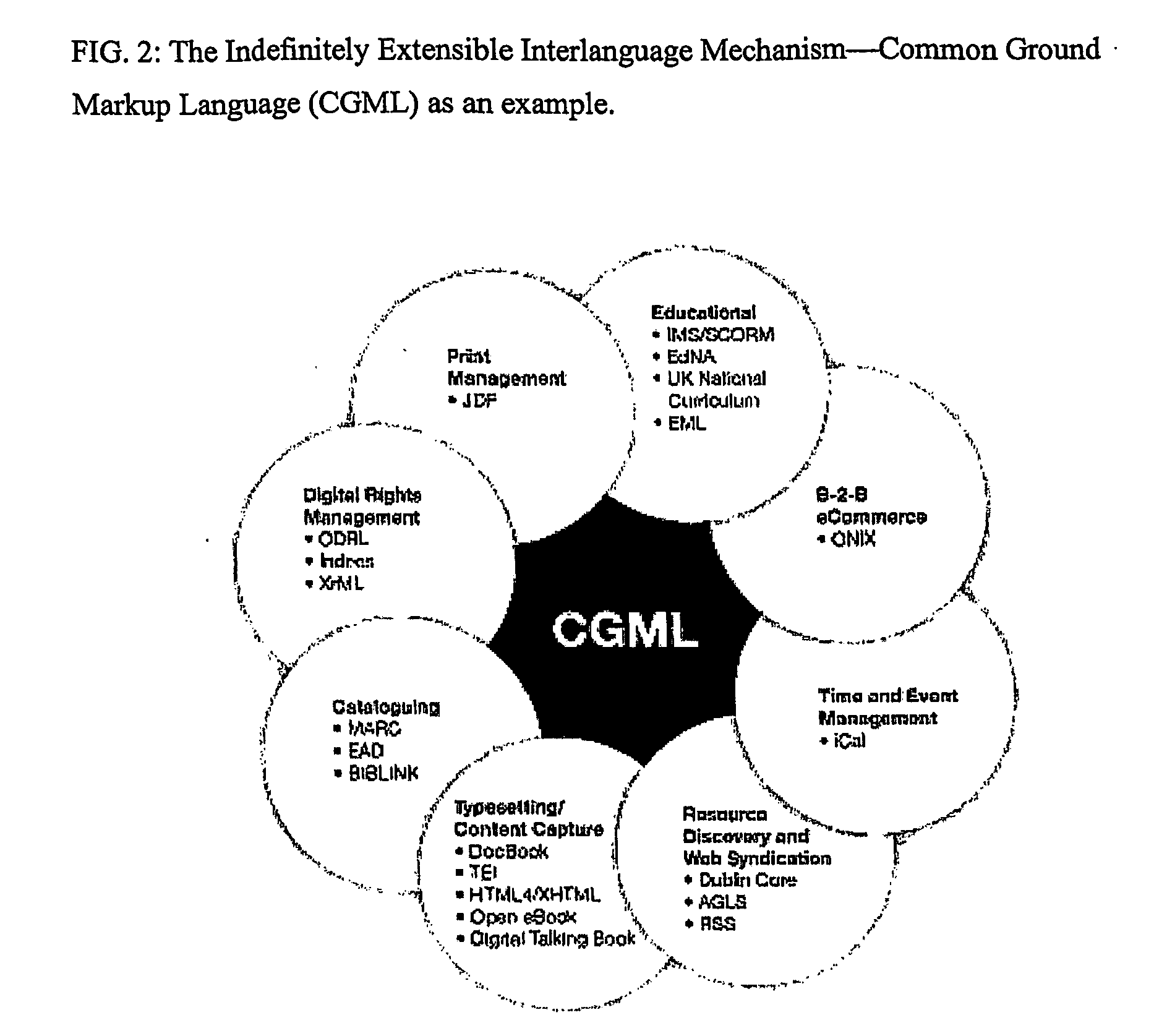The key deficiency of
HTML (progressively removed by version 4 of
HTML) was that it was somewhat of a conceptual jumble, mixing historical typesetting tags (presentational concepts) with structural and semantic tags.
The former
interoperability is limited insofar as the claimed flexibility is restricted to a single DTD.
The latter operates at such a high level of generality that it provides no practical or workable basis for DTD-to-DTD
interoperability.
To take the example of the publishing industry, a number of key XML-based schemas have emerged, with an enormous amount of functional overlap, but without any real possibility of achieving interoperability given the current state of the art.
There is one great barrier to this vision, and that is the problem of interoperability.
Even though each standard or XML DTD has its own functional purpose, there is a remarkable amount of overlap between these standards.
The overlap, however, often involves the use of tags in mutually incompatible ways.
Despite this, it is simply not possible to transfer data from one standard to another as each standard has been designed as its own independent, stand alone DTD.
This, in fact, points to one of the key deficiencies of XML as a meta-mark-up framework: it does not provide a way for DTDs to relate to each other.
In fact, its very openness invites a proliferation of DTDs, and with this proliferation, the problem of interoperability compounds itself.
This produces a practical, commercial problem.
This disrupts the
digital file flow, hindering supply chain integration and the possibilities of automating key aspects of supply chain, manufacturing and distribution processes.
Precisely the same practical problems of interoperability are now arising in other areas of the electronic commerce environment.
This complexity arises in the relatively simple transfer of information between two conferring parties.
However, in a
scenario where there are many more than two parties, where the information is not covered by a single standard, where the resources and skills of the parties cannot facilitate costly and time-consuming integration, a different approach is needed-one which caters for the complexity of the messages, while providing tools which simplify the provision and extraction of
metadata.
Research has demonstrated, however, that this is not enough, being subject to many of the same problems as the individual schemas being mapped—versioning, terminological differences and so on.
2. the fact that rendering alternatives are mostly limited by
data entry methods-printed web pages do not live up to the historical standards of design and
readability of printed text, and alternative non-visual renderings, such as digital talking books are at best poor.
However
metadata harvested in one scheme can not be readily or effectively be used in another.
Very limited interoperability is available between these different ontologies for the structure of textual data, and only then if it has been designed into the ontology and its associated presentational stylesheets.
Furthermore, it is not practically possible to harvest accurate
metadata from data, as data structuring ontologies and ontologies for metadata are mutually exclusive.
Its success, however, has been very limited, primarily because of the semantic dissimilarities between overlapping ontologies and because of the limited rendering options catered for in ontologies which define
data structure.
Creating a single crosswalk is a large and complex task.
As a consequence, the sheer number of significant overlapping ontologies in
a domain presents a barrier to achieving interoperability.
The failure of ‘the
semantic web’ to improve the search mechanisms of computers and
the Internet across even similar domains of knowledge, information and data.
There is limited interoperability between ontologies for metadata tagging, and when there is, it is a consequence of the laborious manual crosswalks approach.
There is a limited range of rendering options, even when mark-up for structure and semantics is separated from the rendering apparatus of the stylesheet.
 Login to View More
Login to View More  Login to View More
Login to View More 


